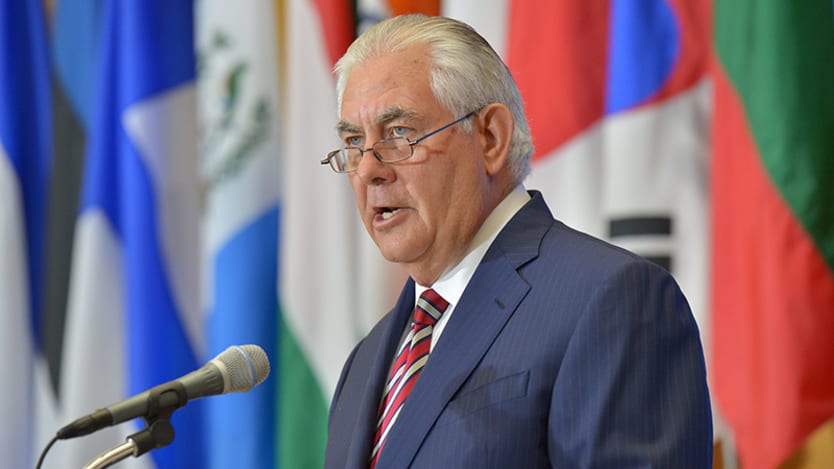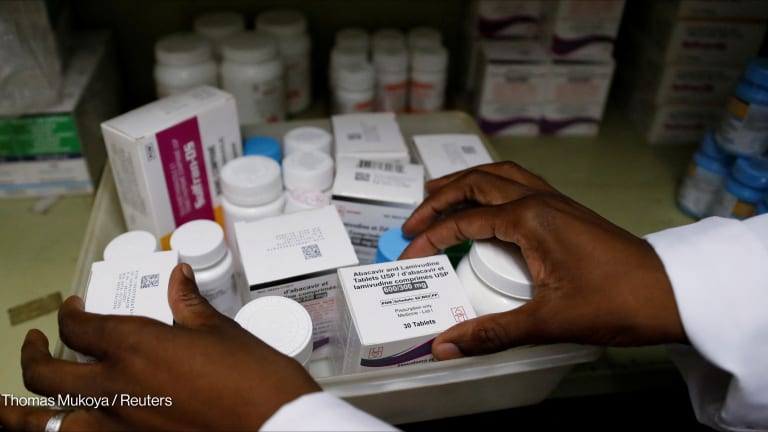
NEW YORK — U.S. Secretary of State Rex Tillerson will launch a new strategy to guide U.S. global AIDS programs for the next three years on Tuesday, during his engagement at the United Nations General Assembly.
The new strategy calls for the U.S. President’s Emergency Plan for AIDS Relief to “accelerate implementation in a subset of 13 high-burden countries that have the potential to achieve epidemic control by 2020.”
Those 13 countries are Botswana, Côte d’Ivoire, Haiti, Kenya, Lesotho, Malawi, Namibia, Rwanda, Swaziland, Tanzania, Uganda, Zambia, and Zimbabwe. They were selected based on their HIV and AIDS burden; rate of new HIV infections; treatment coverage; number of AIDS-related deaths; and the potential for achieving epidemic control by 2020, according to a senior State Department official.
Asked whether the “acceleration” of efforts in 13 countries would require the “deceleration” of efforts in other countries, the official told Devex that PEPFAR will continue to invest in more than 50 countries under the new strategy.
The initiative will maintain lifesaving antiretroviral treatment for all the people PEPFAR supports, provide greater services for orphans and vulnerable children, and ensure that the most vulnerable and key populations have access to essential services for preventing and treating HIV, the official said.
Catch up on Devex coverage of Global Goals Week:
▶ Leaders must tackle conflicts driving humanitarian crises, ICRC chief says
▶ WFP chief: Ending global hunger by 2030 may not be possible
▶ New UNDP administrator looks to define agency's value, create fresh strategic vision
▶ Amid global crises, UNGA will show development community rising to the challenges
▶ UN reform, Trump, the SDGs, and moonshots: 6 things to watch at Global Goals Week
Sign up for our Global Goals Week daily briefings and visit our Global Goal Week site for full coverage
In his 2018 budget request, President Donald Trump proposed a 17 percent cut to PEPFAR — from $4.6 billion to $3.8 billion. The U.S. Congress has consistently pushed back against cuts to a global health program that benefits from wide bipartisan support.
In July, Ambassador Deborah Birx, U.S. global AIDS coordinator, downplayed the negative impacts any reduction might have. Birx pointed to opportunities to use data to improve efficiency and effectiveness, an approach echoed in this new strategy, which draws heavily on population-based HIV impact assessments and builds on PEPFAR-supported studies from five African countries showing the HIV epidemic coming under control.
“This bold course toward epidemic control is only possible with continued aggressive focus, quarterly analysis, and partner alignment for maximum impact,” the new “Epidemic Control Strategy” reads.
This strategy will also reduce the future costs required to sustain the HIV and AIDS response, the report says: “In less than two decades of commitment and funding since PEPFAR’s launch by President George W. Bush in 2003, the pandemic will have progressed from tragedy to control.”
Not everyone has jumped on board with the administration’s assurances that it can achieve both significant cuts to HIV and AIDS funding and progress toward ambitious goals. After Tillerson testified on Capitol Hill about funding levels and policy directions for the flagship U.S. AIDS program in June, a group of 41 AIDS organizations sent him a letter taking issue with the administration’s approach.
“You testified that a proposed $1 billion reduction to State, USAID and CDC Global Health accounts will be offset by cutting back to focus on epidemic control to only 11 countries,” the Global AIDS Policy Partnership wrote on June 23. “In your testimony, you suggested PEPFAR will focus on this subset of countries until they are self-sufficient, and then there will be an opportunity to expand. But as PEPFAR’s own 2017 Report to Congress showed, this is a failed strategy,” the letter reads.
In that report, PEPFAR issued “a warning for all countries of what can occur if continual analysis, focus, and efforts to control the epidemic are not maintained.”
The new strategy does not detail how PEPFAR’s funding allocation would change under the epidemic control plan, nor does it mention any overall reduction in resources.
The new strategy will be implemented beginning in fiscal year 2018, the State Department official told Devex, and reiterated that it does not mean PEPFAR will be “focusing implementation on fewer places,” but rather “seizing the unique opportunity to particularly accelerate progress in 13 high-burden countries that have the potential to reach epidemic control in the next three years.”
Devex is on the ground in New York at Global Goals Week, bringing you daily morning briefings with everything you need to know — whether you're here in person or following the events from afar. Sign up for our daily briefings.








